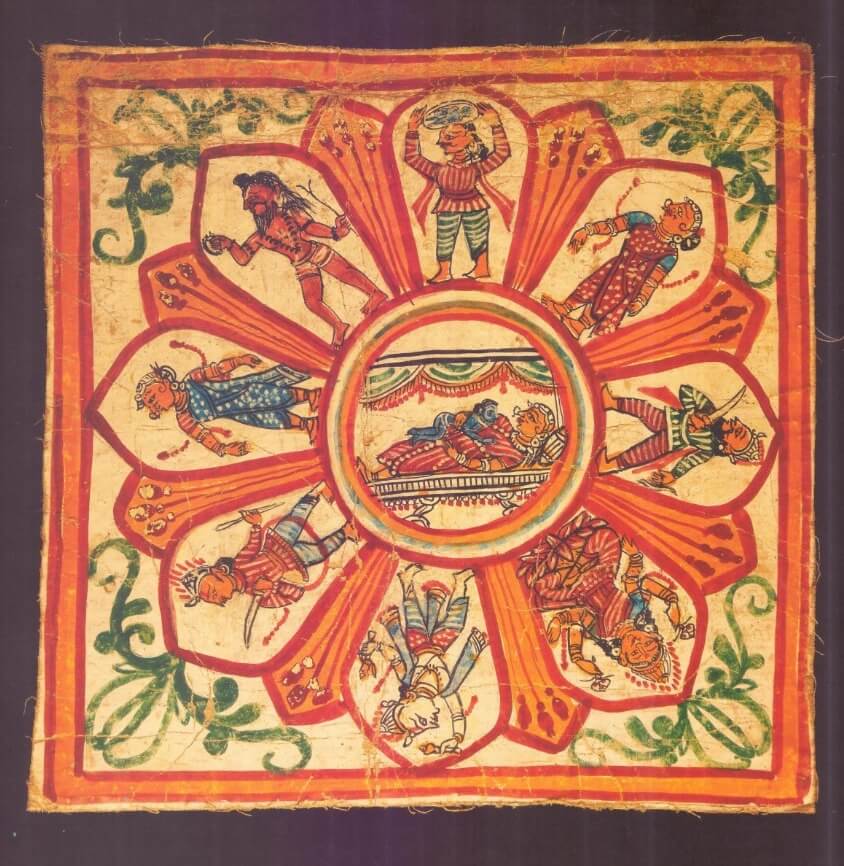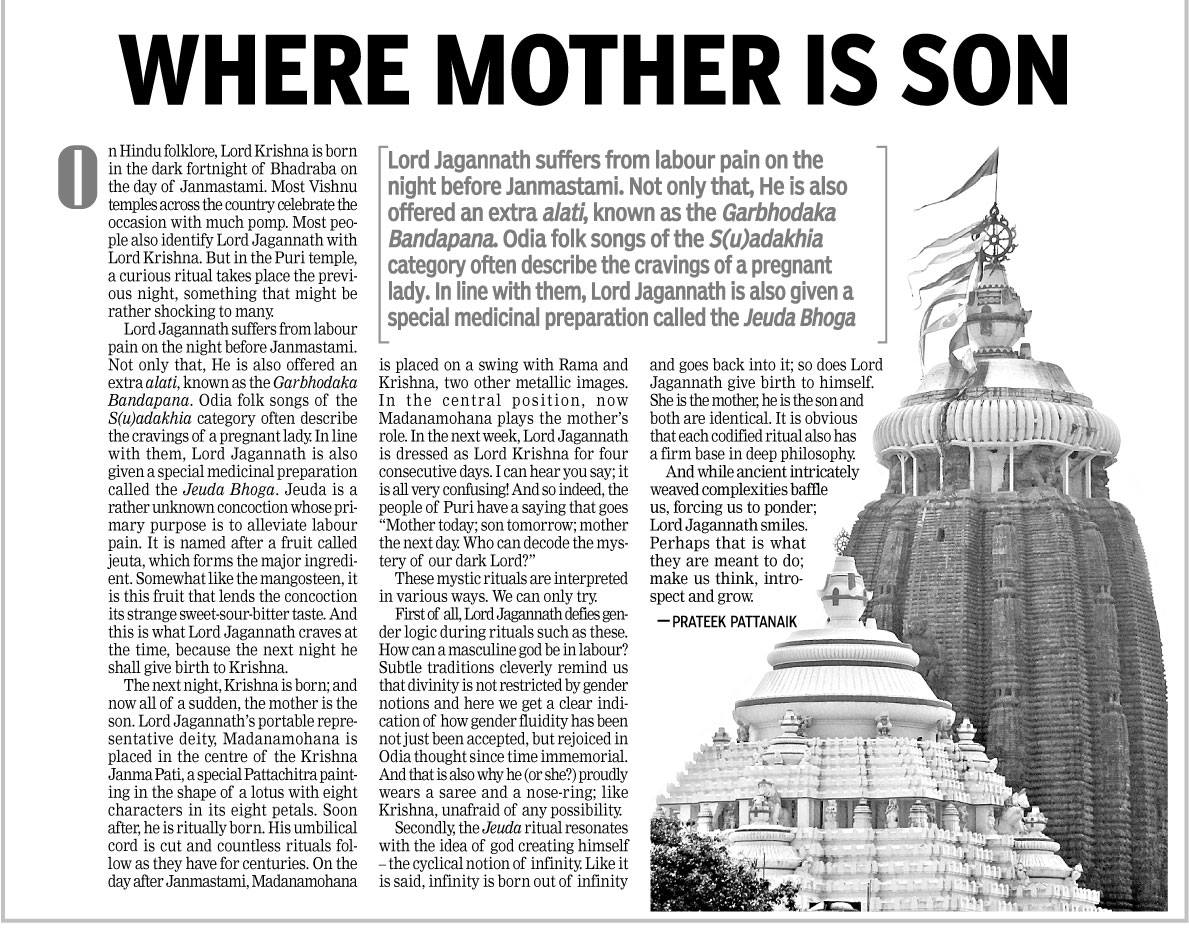Published on 2 Sep 2018 in OrissaPOST
In Hindu folklore, Krishna is born in the dark fortnight of Bhadraba on the day of Janmastami. Most Vishnu temples across the country celebrate the occasion with much pomp. Most people also identify Jagannatha with Krishna. But in the Puri Temple, a curious ritual takes place the previous night, something that might be rather shocking to a few.
Jagannatha suffers from labour pain on the night before Janmastami. Not only that, he is offered an extra alati, called the Garbhodaka Bandapana. Odia folk songs of the S(u)adakhia category often describe the cravings of a pregnant lady. In line with them, Jagannatha is also given a special medicinal preparation called the Jeuda Bhoga (ଜେଉଡ଼ ଭୋଗ). Jeuda is a rather unknown concoction whose primary purpose is to alleviate labour pain. It is named after a fruit called Jeuta, which forms the major ingredient. Somewhat like the mangosteen, it is this fruit that lends the concoction its strange sweet-sour-bitter taste. And this is what Jagannatha craves at the time, because the next night he shall give birth to Krishna.

The next night, Krishna is born; and now all of a sudden, the mother is the son. Jagannatha’s portable representative deity, Madanamohana is placed in the centre of the Krishna Janma Pati, a special Pattachitra painting in the shape of a lotus with eight characters in its eight petals. Soon after, he is ritually born. His umbilical cord is cut and countless rituals follow as they have for centuries. On the day after Janmastami, Madanamohana is placed on a swing with Rama and Krishna, two other metallic images. In the central position, now Madanamohana plays the mother’s role. In the next week, Jagannatha is dressed as Krishna for four consecutive days. I can hear you say; it is all very confusing! And so indeed, the people of Puri have a saying that goes “Mother today; son tomorrow; mother the next day. Who can decode the mystery of our dark lord?”
These mystic rituals are interpreted in various ways. We can only try.
First of all, Jagannatha defies gender logic during rituals such as these. How can a masculine god be in labour? Subtle traditions cleverly remind us that divinity is not restricted by gender notions and here we get a clear indication of how gender fluidity has been not just been accepted, but rejoiced in Odia thought since time immemorial. And that is also why he(or she?) proudly wears a saree and a nose-ring; like Krishna, unafraid of any possibility.
Secondly, the Jeuda ritual resonates with the idea of god creating himself, the cyclical notion of infinity. Like it is said, infinity is born out of infinity and goes back into it; so does Jagannatha give birth to himself. She is the mother, he is the son and both are identical. It is obvious that each codified ritual also has a firm base in deep philosophy.
And while ancient intricately weaved complexities baffle us, forcing us to ponder; Jagannatha smiles. Perhaps that is what they are meant to do; make us think, introspect and grow.
